Featuring Bluetooth connectivity, a rosewood veneer MDF plinth, and a sleek carbon fiber tonearm, Audio Technica’s LPW50BT combines stylistic flair with impressive sound. Is this the levelling-up manual turntable you’ve been looking for?
| Pros | Cons |
| Engaging and well-balanced sound. | Bluetooth was temperamental to connect (in my experience). |
| Excellent build quality from both a look and feel perspective – a joy to use. | Other minimalist designs are more agile in their tracking abilities. |
| Great features and connectivity options. |
At $499 (or £420) the LPW50BT sits in the mid-range of Audio Technica’s increasing range of turntable offerings.
Moving away from the plastic plinth designs of their more affordable entry-level models, the LPW50BT introduces a solid 30mm thick MDF plinth finished in a rather sophisticated rosewood veneer.
Immediately, this change in material and finish gives the turntable an altogether more sophisticated “audiophile” aesthetic. Combined with the rather sharp-looking carbon-fiber tonearm and the diecast aluminum platter, the LPW50BT certainly looks higher-end than, say, their LP3XBT model, which I also recently reviewed.
Other key features include a built-in phono stage, a detachable headshell (pre-fitted with a black Audio Technica VM95E cartridge), and a handy dial for controlling rotation speed between 33 1/3 RPM and 45 RPM.
Also of note is the DC servo motor, which is said to feature “Active Speed Stabilization” for accurate platter rotation speed.
Setting up the turntable is simple, with only a small amount of assembly required by the user. You’ll need to place the diecast aluminum platter onto the spindle and attach the drive belt to the motor pully. After this, all that is required is to attach the headshell and set the appropriate tracking and anti-skate force.
These small setup tasks can seem intimidating to beginners, but thankfully, Audio Technica provides great instructions in the user manual, and you can always follow our guide on setting tracking force, which includes an easy step-by-step video.
Another critical step is leveling the turntable plinth, which, thankfully, is really simple thanks to the LPW50BT’s adjustable feet. I use a small spirit bubble for this task to ensure the turntable is perfectly level.
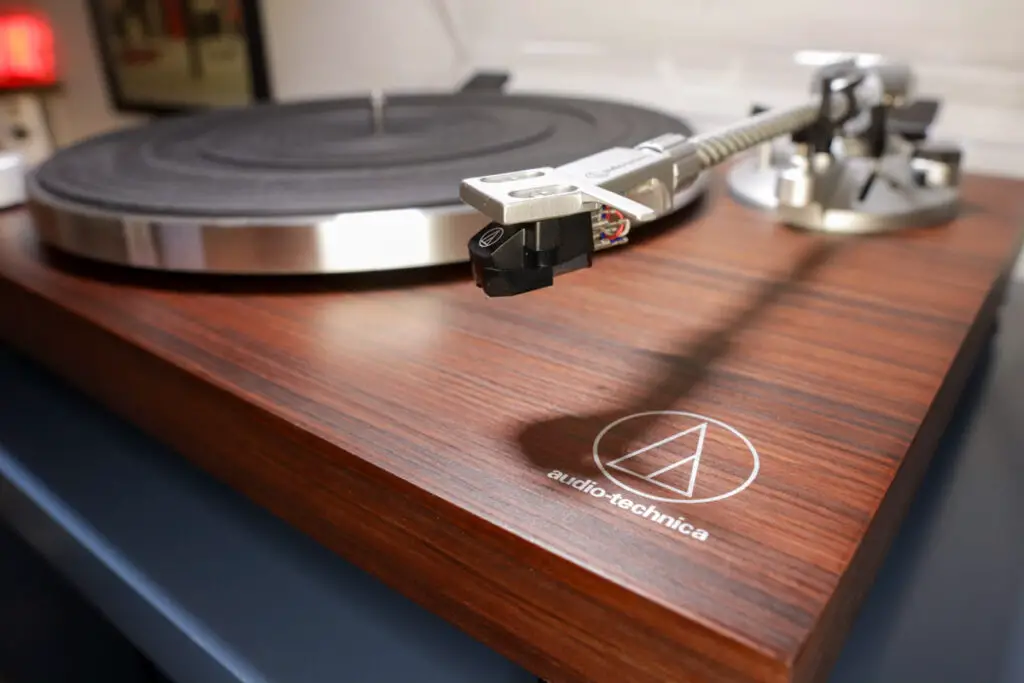
First Impressions
With the setup out of the way, my initial impressions are very positive. The LPW50BT feels sturdy, well-built, and a real joy to operate. The tonearm feels silky and resistance-free, while the hydraulically damped cue lever is impressively smooth.
I’m pleased to say the speed control knob also feels high quality and is a big step up from the slightly flimsy buttons I encountered on the LP3XBT.
There is a small amount of play in the tonearm bearing that may upset audiophile purists, and, at this price, I’d also liked to have seen some dampening treatment applied to the aluminum platter (something that was included in the design of Fluance’s new RT-81+). Overall, these are minor issues, and the built quality feels very high across the board.
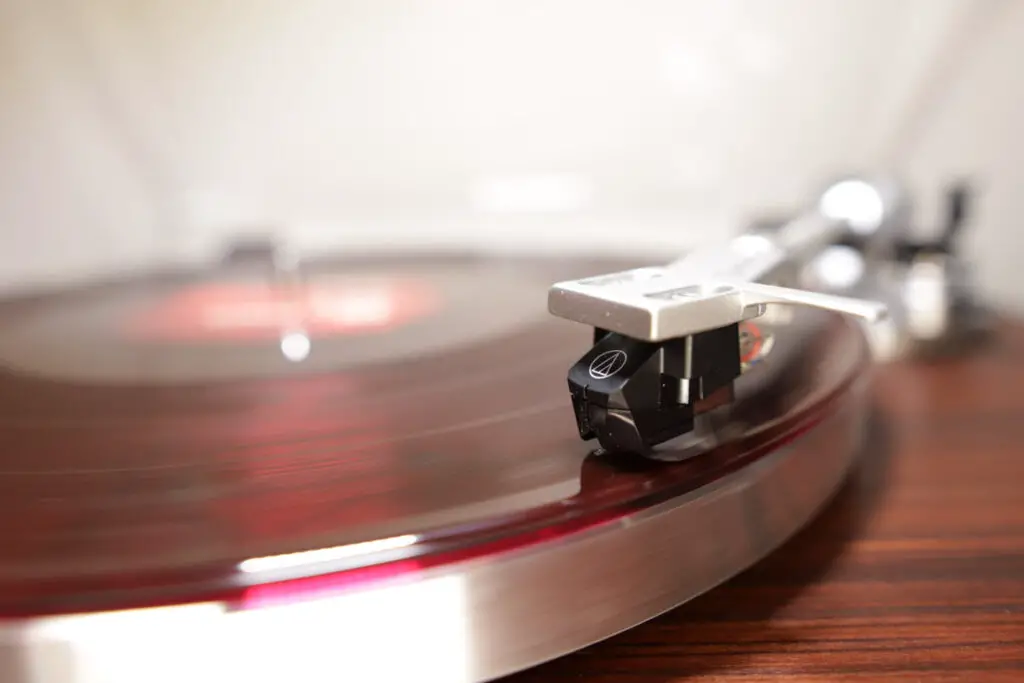
Audio Technica VM-95 Signature Sound
Having reviewed a number of turntables fitted with Audio Technica’s VM-95 cartridge, I’ve developed a deep respect for the capability of this highly capable yet very affordable unit.
Fitted with a black edition of the VM-95E (which is the Elliptical stylus version), the LPW50BT immediately benefits from the authoritative low-end and balanced higher frequencies of the VM-95 cartridge.
Ortofon cartridges are another popular pre-fitted option on new turntables, which, to my ears, have a considerably more forward upper mid-range and a zestier high-frequency signature sound.
Which brand signature sound you prefer depends greatly on individual taste, but also your overall sound system (particularly the phono preamp). If adding a little more high-frequency sizzle sounds appealing to you, you might consider looking into the many stylus upgrade options in the VM-95 ecosystem.
One of the great selling points of this cartridge is the wide range of “plug and play” stylus upgrades, allowing you to change the supplied elliptical stylus for a nude elliptical, microlinear, or even a Shibata stylus without fitting a new cartridge. Simply purchase the stylus upgrade and slot it in place. Doing so may extract more detail from your records, particularly in the higher frequencies.
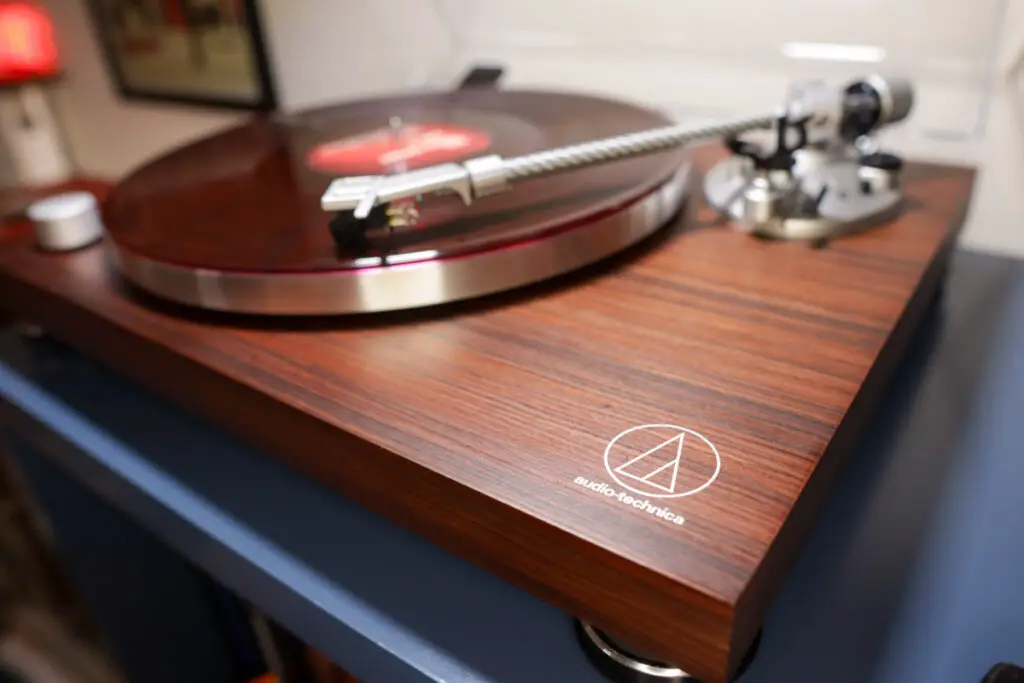
AT-LPW50BT Listening Test
The AT-LPW50BT has a pleasing and well-balanced sound, such is the sonic characteristic of the VM-95 cartridge.
The internal phono preamp sounds, as these things often do, perfectly adequate. If this were my first step into the vinyl hobby, I would be perfectly content with the internal phono stage to get me up and running.
The sound has plenty of detail and a good amount of confident delivery. Nothing stands out as harsh or muddy, and the overall delivery is energetic and dynamic for a turntable at this level using just the built-in preamp.
The Bluetooth connection took me a few attempts to successfully sync with my Pro-Ject Stereo Box DS2 integrated amplifier, but when hooked up, you would be hard-pressed to tell the difference between the wired and wireless connection.
I also tested the Bluetooth connection with my Shure Aonic 50 wireless headphones, which are superb for late-night listening sessions so as not to disturb the neighbors or kids!
I had to disable all other Bluetooth devices in the room to establish a connection; overall, the LPW50 seemed harder to connect compared with Audio Technica’s LP3BT model. Your experience may vary depending on your Bluetooth devices.
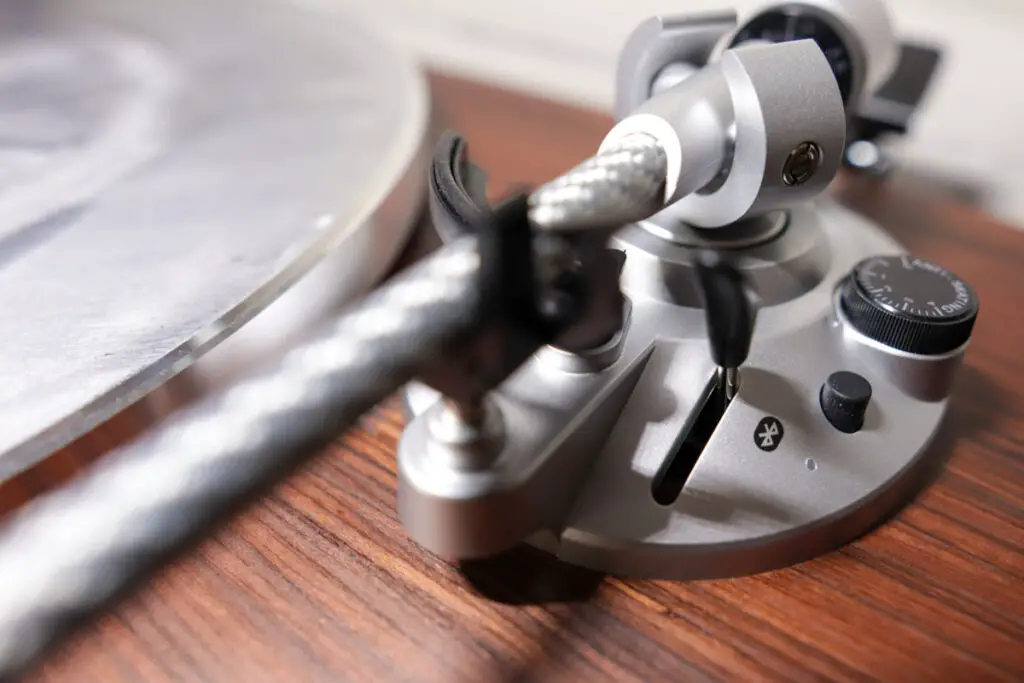
For fun, I hooked the AT-LPW50BT up to a couple of my external phono preamps, including Michael Fidler’s Spartan 15 and the Moon 110LP. The resulting performance upgrade demonstrates just how much difference a good external phono preamp can make.
The stereo width widens, and the overall soundstage opens up, making it much easier to hear and place individual instruments. The sound becomes more lively and dynamic with a greater sense of depth and detail.
Such improvements are typical with even fairly modest external phono preamps, and while I thought the AT-LPW50’s phono stage sounded pretty good, it’s well worth upgrading when funds permit.
Spinning a 20th-anniversary copy of The White Stripes Elephant, the AT-LPW50BT does a great job of presenting the raw intensity of the simple but powerful drums and driving guitar riffs. The depth of the low end on the album’s opener, “Seven Nation Army” is noticeably thicker and tighter through an external phono preamp. The pumping sound of analog tube compressors also becomes richer and more apparent.
Arguably, I’ve reviewed other turntables from the likes of Pro-Ject and Rega with more precision and detail when presented with fast-paced, very transient passaged of music, but that’s not to say the AT-LPW50BT isn’t very capable in this area. It’s simply a case of different priorities and compromises…
Manufacturers such as Rega and Pro-Ject place the precision and quality of bearings as a paramount concern. With more affordable models, prioritizing ultra-low-friction precision in bearings comes at the expense of many frills, bells, and whistles. This can lead to some of their turntables feeling quite rudimentary — or, shall we say, “less luxury lifestyle” than models like the LPW50.
I tested the LPW50 with a copy of YES – Fragile (a record I recently listened to while reviewing the Rega Planar 1), and here, it has to be said that the Rega pips the LPW50 to the post when concerning agility and detail. However, that’s not to say the Audio Technica deck can’t hold its own.
For a change of pace, I then spun Norah Jones Come Away with Me (an old favorite, that’s for certain). Through a good quality preamp, the LPW50 produced a fantastically rich, detailed sound that reveals plenty of the album’s subtlety and intimate details of the breathy vocal and instrument subtleties (such as fret noise, for example) that make the album feel engaging and personal.
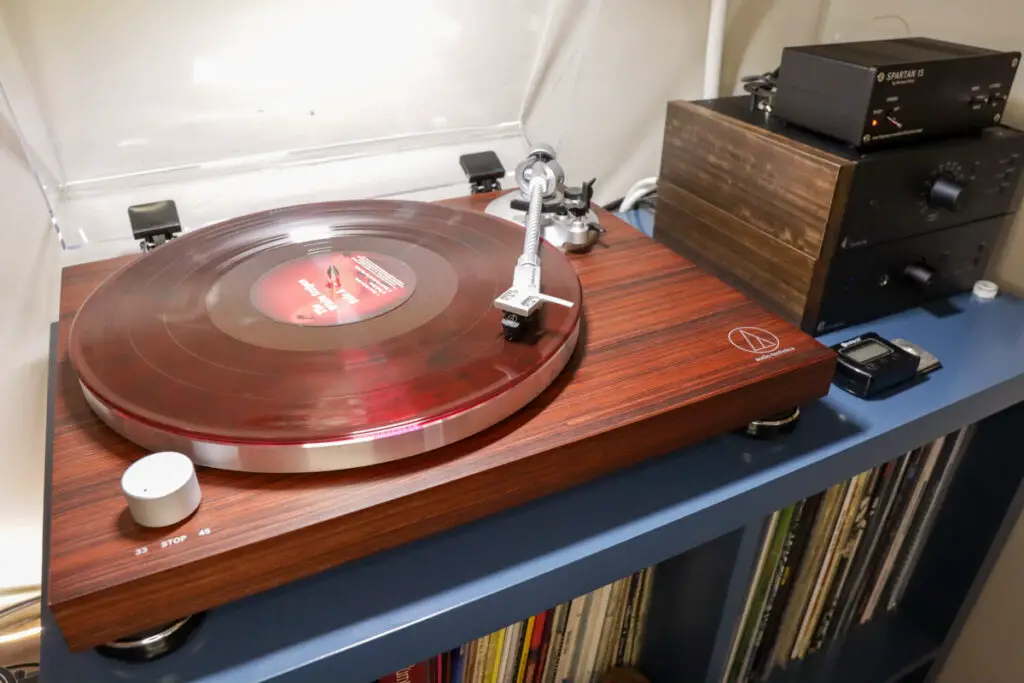
Audio Technica AT-LPW50BT – The Bottom Line
The Audio Technica AT-LPW50BT combines an excellent immersive listening experience with plenty of appealing features and a living-room-friendly aesthetic.
The addition of Bluetooth is a handy extra feature, albeit a little temperamental when it comes to establishing a connection. The overall build quality is excellent, and the vintage look will no doubt appeal to those who want more than just a bland black box in the corner of their listening space.
The affordable turntable market is a very competitive space these days, with the likes of Fluance, U-Turn, Pro-Ject, Rega, and many more fighting for their corner of the market.
All of the above manufacturers make great options depending on your budget and priorities. The AT-LPW50BT will appeal to newcomers and returning collectors with a medium budget seeking a well-built turntable with excellent sound quality and the option of occasional Bluetooth connectivity.
Equally, it will also appeal to collectors who don’t want to mess around with moving the drive belt manually for speed changes (a compromise that is very common in the affordable turntable space).
This turntable certainly blends well into a living room HiFi setup. So if Audio Technica’s aim here is to balance audiophile sound quality and lifestyle appeal, they’ve hit the nail on the head. For me, only that temperamental Bluetooth connection prevents this superb, affordable turntable from getting a full five stars.

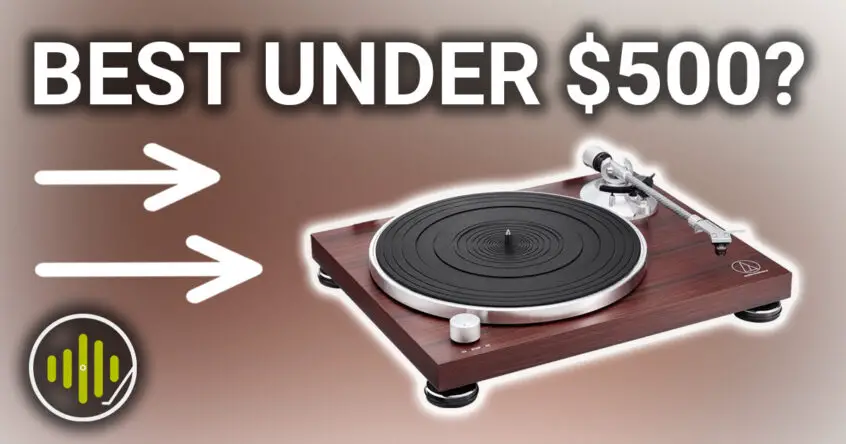


Very good review, seems like and looks like a very nice turntable.
I do wonder why they put the on and off switch on the rear where it could make it difficult for most people to reach back and turn it off, that makes no sense to me.
I also think they should make it an option if a person wants a bluetooth or not.
And I think they should offer a heavy acrylic platter as an option.
Which makes me wonder which turntable sounds better if using the same cartridge, this Audio Technica model or the Fluance RT85 which is in the same price category, using the built in phono amp on both.
The thing that bothers me a lot about the Fluance turntables is their inability to adjust a cartridge VTA! Why would a company not put that feature into a turntable? That limits an owner to what cartridges they can use. So course my question about this Audio Technica turntable is, does it have the VTA adjustment capability?
Thanks! Glad you liked the review. It does seem a bad place for an off switch, but then again, I suppose it needs to be by the power supply input.
There is a version of this without Bluetooth called the LPW50PB (But… it only comes in black).
There is no VTA adjustment on this I’m afraid. I agree it’s nice to have more cartridge options, but you tend to have to spend closer to 1K on a deck to get it. Shame.